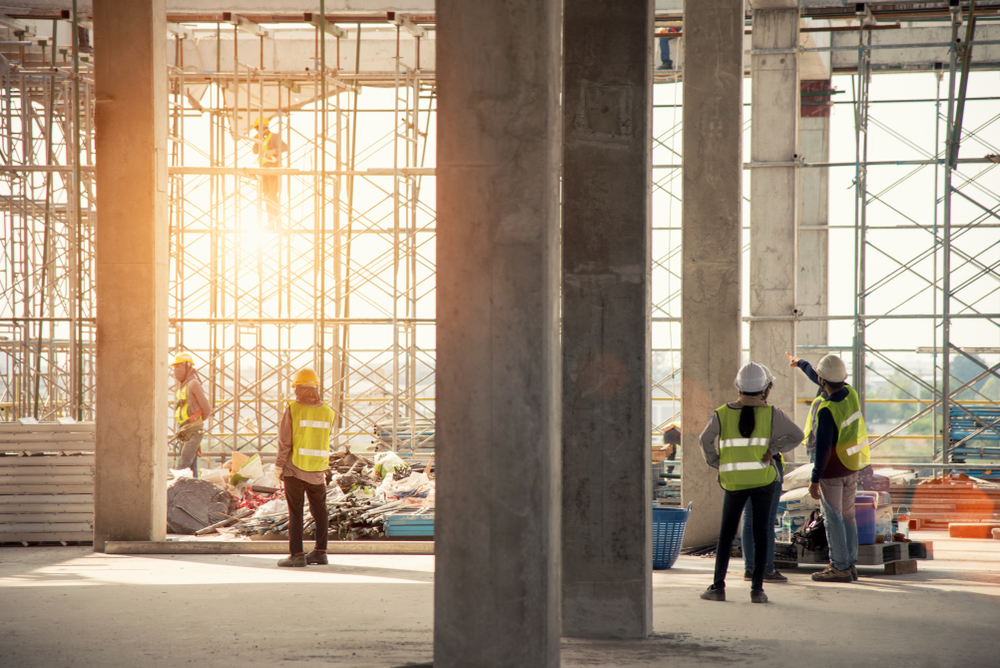
When we consider our contribution to climate change, we might think about our transport choices, how much meat we consume and our propensity to buy new clothes. But the buildings we occupy every day, from our homes and offices to hospitals and schools, play an equally significant role.
The building and construction industry is responsible for more than a third – 39 per cent – of all global carbon emissions, and daily energy use is only part of that picture. Operational carbon – emitted through heating, cooling or powering a building – accounts for 28 per cent while the remaining 11 per cent comes from embodied or “upfront” carbon, which is produced during the construction process and includes materials, labour, transportation and demolition in the case of rebuilds. Together, these make up the “whole-life” carbon – what a building emits in total over its lifetime.
Despite embodied carbon being far less engrained within the public consciousness, architects and engineers need to reduce both types of emissions to try to reach net-zero targets. The first step of any project is to consider whether a new build is even necessary or whether a refurbishment could work instead, says Diego Padilla-Philipps, net-zero lead for building structures at WSP, a leading UK engineering professional services consultancy. “The most sustainable building is the one that’s already been built,” he says.
The next step is to use less. Reducing materials immediately lowers the embodied carbon footprint, as does making more sustainable choices, such as swapping out steel or concrete for natural materials like timber and bamboo, or low-carbon steel. A building’s weight is also a contributing factor, so using lightweight materials helps to cut emissions, as does reducing “spans” – the space between columns – which helps to redistribute weight.
A similar approach can be taken with operational carbon – architects and engineers should look to create “inherent efficiency” within the permanent structure of a new building at the start of a project, says Kate Dougherty, net-zero lead for building services at WSP.
This can include adjusting orientation so it receives optimum sunlight and ventilation, and including wall insulation and solar shading systems, which control how much heat and light is let in. Once the structure’s been made as “lean” as possible, designers can move on to making it as “clean” as possible, she says, through features such as double or triple glazing and heat pumps that move heat from outside into the building. Finally, renewable energy solutions such as thin, laminate solar panels can be installed on the roof, improving the building’s overall functionality.
Unfortunately, designs often seriously underestimate the carbon impact of a building, creating a discrepancy between projections and reality. This “massive performance gap” is an industry-wide issue, says Dougherty, and there needs to be a shift towards regular monitoring of energy expenditure through sensors and meters. Building adjustments can then be made if necessary, such as swapping out double glazing for triple.
Of course, this would only reduce operational carbon – once carbon is locked into the structure of a building, it’s impossible to get it back. Some organisations have created their own solutions to tackling this; WSP is currently developing Daisy, a tool that uses artificial intelligence to assess different factors of a building’s construction that could contribute to embodied carbon. It then comes up with hundreds of options to find the one that delivers the lowest-possible carbon solution.
The architectural practice Allies and Morrison has designed a similar tool that measures the projected embodied carbon of different design decisions against a digital representation of the building. This enables them to change elements, such as the façade material, and assess the impact before a brick is even laid. The goal is to roll it out to other practices once it has been refined.
“We want to allow more people to access things like this, so [architects] don’t have to wait five weeks to get that information from a consultant,” says James Woodall, head of sustainability at Allies and Morrison. “Designers often have an idea in their head of what material they want to use without being cognisant of its impacts – we’re trying to inform those very early design decisions and ask people to think again.”
Operational and embodied carbon do not always operate in parallel, adds Woodall, and architectural choices might not simultaneously lower both. For instance, a solar shading system that limits light entering an office and regulates temperature is often made from aluminium. Despite reducing operational carbon, aluminium has a high carbon content.
Architects need to “strike a balance” between the two, he says, and consider factors such as how long a building is going to be standing. “If a building has a 20-year lifespan as opposed to a 100-year lifespan, you have to greet embodied carbon in material choices with a lot more scrutiny,” he says.
They also need to challenge design conventions, and potentially face tricky conversations with clients. Floor-to-ceiling glass is a popular feature within offices, providing many benefits including natural light and better views for employees – but even triple glazing loses far more heat compared to a well-insulated wall. “You have to ask, is it justified?” says Woodall. “The industry is so full of waste. Everyone is having to come out of their comfort zone and challenge pretty established cultural norms.”
Industry players can make conscientious decisions, but substantial change must come from government, he says. In the UK, the Building Regulations 2010 has a section called Part L dedicated to tackling building emissions, with targets for operational carbon measured in carbon dioxide produced per square metre per year.
The legislation is in the process of being updated, following a government consultation into changes to Part L for domestic and non-domestic buildings. In its current form, Padilla-Philipps and Dougherty of WSP say the targets are vague and that the government needs to set a clear UK limit, which could be carved up into “budgets” for different industries such as aviation and construction. “If all we have is a target per square metre, what is the ultimate limit?” says Padilla-Philipps. Such a target would also create an “incentive to build less”, adds Dougherty – the most effective solution for carbon reduction.
Embodied carbon is currently unregulated; but a group representing the engineering, architecture and construction industries has drafted a proposal called Part Z, with the aim of getting it added to the Building Regulations 2010 and is currently lobbying government to do so. The amendment would set clear limits and assessment requirements on embodied carbon emissions for all major building projects.
Building construction in the UK produces 40 to 50 million tonnes of carbon per year, more than the shipping and aviation industries combined. It is therefore crucial that government starts taking embodied carbon seriously, says Dougherty – especially since its impact cannot be reduced over time through tweaking energy systems. “The vast majority of embodied carbon is happening on day one,” she says. “It’s locked in and you’re not getting it back.”
Simon McWhirter, director of communications, policy and places at the UK Green Building Council (UKGBC), says that embodied carbon has been on the “back foot” because it’s harder for people to visualise and understand. “Operational carbon feels easier,” he says. “It’s more visible in the form of energy efficiency systems. But [embodied carbon] is going to rise up the agenda.”
The government needs to completely rethink how it measures and prices carbon impact, he says – solid targets should be set within the recently published Heat and Buildings Strategy, with minimum standards of performance for different types of buildings and regular adherence checks. Energy performance certificates are not fit for purpose, he says, because they just assess projected energy use rather than actual energy use: “The way we measure and monitor energy performance is intrinsically broken in the UK. You can’t manage what you don’t measure.”
Financial incentives should also be established, he says, such as business rate relief for commercial businesses that meet energy performance targets and removing VAT on buildings that are retrofitted with more energy-efficient systems. The government should also lead by example, he adds, by ensuring all existing and new public sector buildings align with net-zero targets. Additionally, a commitment to stop the sale of gas boilers by 2030 would mean businesses start planning for renewables now – currently, the government has set a goal of “phasing them out” by 2035, but the International Energy Agency (IEA) has stated that fossil fuel boiler sales should stop in 2025 to hit the target of net zero by 2050.
Without such targets, it is difficult for engineers and architects to plan for a future of carbon-neutral buildings. “We need to see limits on embodied carbon,” says Woodall. “Ultimately, designers want targets for both so we can strike the whole-life carbon balance – it’s only then that you really understand what a building’s absolute emissions are.”
Ultimately, making the built environment more sustainable isn’t just about reaching net zero by 2050 – it’s also better for our well-being. Lower energy use means lower bills, helping to tackle fuel poverty as the cost-of-living crisis worsens; temperature control means a more comfortable working environment; improved ventilation results in fewer asthma cases in schools; and more natural light even results in shorter hospital stays and quicker post-operative recovery. “Sustainable buildings are better buildings,” says McWhirter. “Both in planetary terms, and people terms.”

